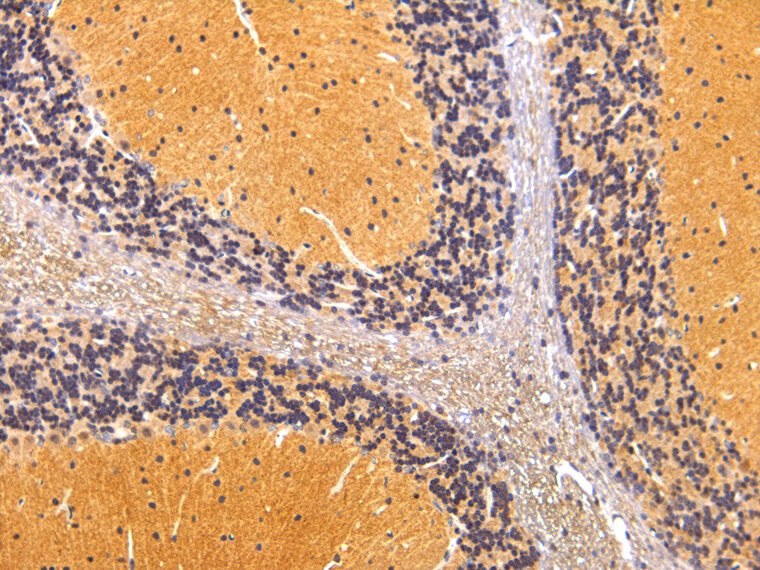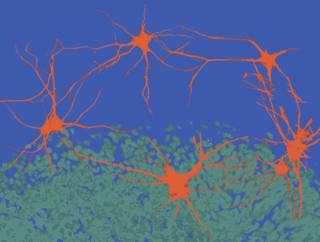
Abstract Brain
15 x 20 in (h x w)
for sale
Division of Nephrology, Department of Medicine
Tetrahydrocannabinol (THC), the primary psychoactive cannabinoid compound found in cannabis, binds to the cannabinoid receptor type 1 (CB1) in the brain producing the subjective “high” feeling, in addition to other effects throughout the brain. The body produces its own compounds that bind to CB1, called endocannabinoids, one of which is made by the enzyme diacylglycerol lipase (DAGL). This image includes 3 partial lobe segments and the white matter of a mouse cerebellum and demonstrates the location of DAGLA (brown) in the outer layer near the brain surface.




